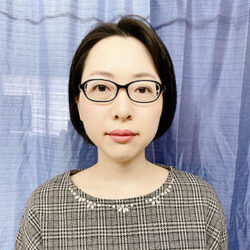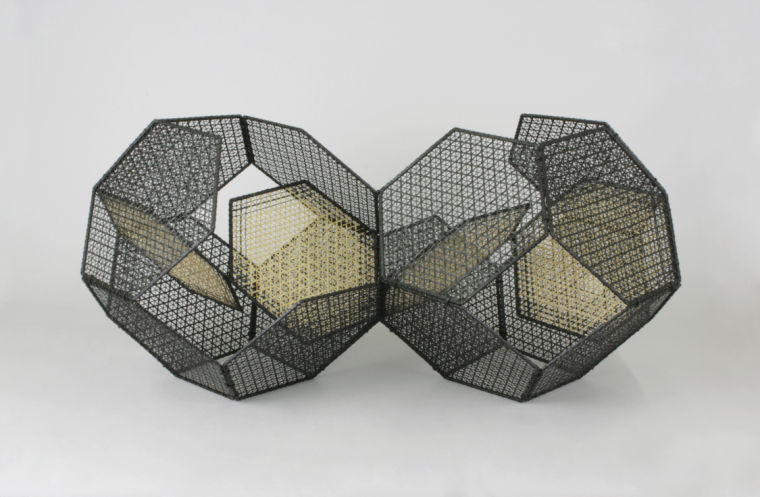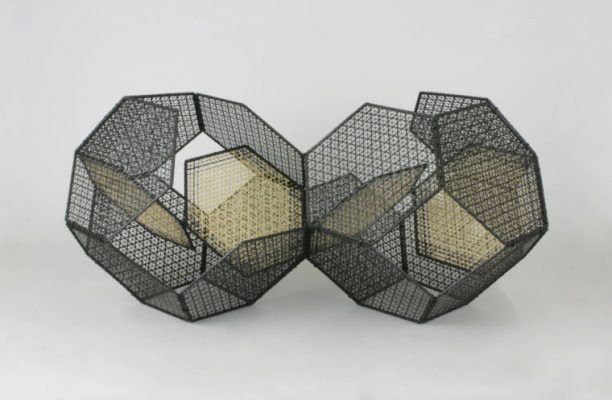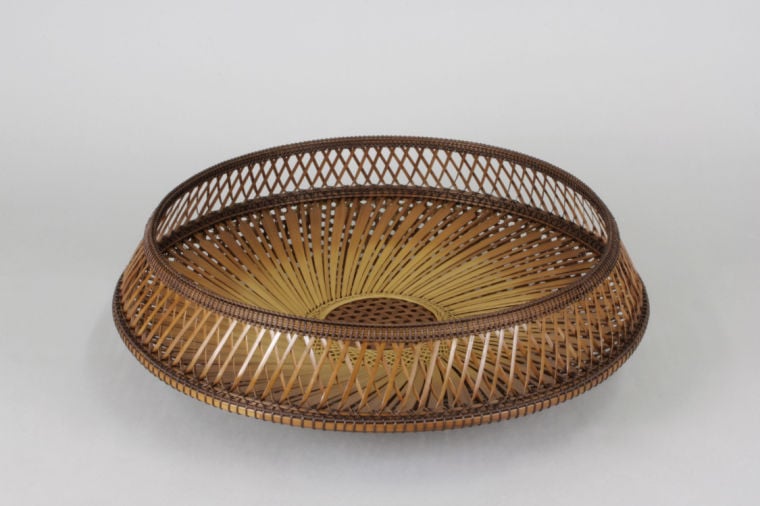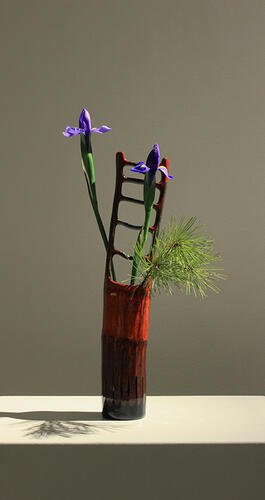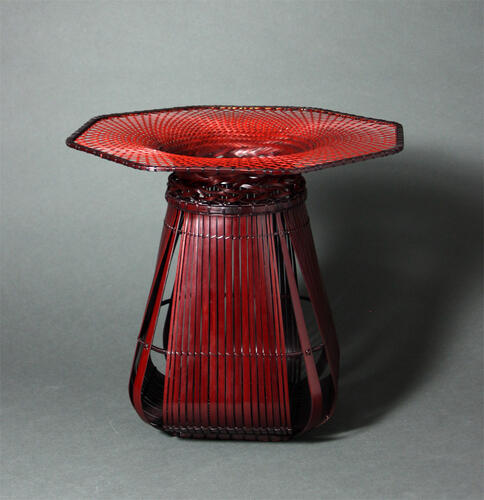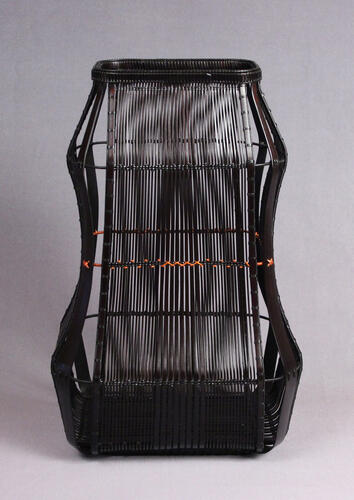Ceramics, calligraphy, and woodblock printing — all of them among the traditional arts of Japan — have been passed down from generation to generation for centuries. But out of these traditions have emerged a number of contemporary artists whose work is innovative and unique, transforming older art forms from the inside out. The same has occurred with Japanese bamboo basketry.
Emerging Bamboo, an exhibition of basketry and sculptural forms on view at TAI Gallery, presents a selection of work by up-and-coming Japanese artists who are redefining the parameters of the difficult medium of bamboo. The work ranges from exquisite vessel shapes and functional baskets to purely aesthetic forms. It is expressive, elegant, and sophisticated in design. The versatility of bamboo is readily seen in the variety of work on display.
For centuries, the Japanese have used bamboo to make vessels, buildings, furniture, and a host of everyday objects. Even today, the art of traditional bamboo basket making is passed down from senior basket makers to younger artisans, often within the same family. Although hundreds of varieties of bamboo exist, only a handful, including madake, nemagari, and susudake, are used in basketry. The choice of bamboo depends on a number of factors, including color, texture, and pliability.
Most of the artists in Emerging Bamboo work with madake. Fukunishi Ryosei, Shirabe Kimiko, Ebana Misaki, and others craft vessels using thin strips of madake bamboo bound with rattan. Ryosei’s Spring Fragrance in the Air, a bowl form with a woven geometric design at its center, reminiscent of a mandala, took months of patience and skill at plaiting to complete. The result is a work of arresting beauty.
Yufu Hiroshi’s work stands out from that of Misaki, Ryosei, and other more traditional basket makers because it has a rougher appearance. It is made with wide strips of madake that have been given a dark stain. Hiroshi’s baskets are often accentuated by stout sections of bamboo stalk that contrast with the thinner woven strips. Overall, his work has a raw aesthetic that emphasizes the beauty of the natural, unrefined material, perhaps expressing the Japanese philosophy and aesthetic principle of wabi-sabi, an ideal of imperfect beauty often expressed through the traditional arts.
The most sculptural of the pieces on exhibit, Nakamura Tomonori’s Diffused Mood Light and Sprite, are two-toned, intricate geometric designs. Dark outer shells composed of a series of flat, hexagonal pieces surround unstained hexagonal shapes in the interior. Because Tomonori does not make a tight weave, the lighter interiors show through the darker shells. He also plays with negative space, leaving sections open to allow viewers to peer inside. The symmetry of interiors and exteriors forms an engaging interplay.
Several artists combine natural bamboo fiber with stained strips of bamboo to achieve decorative motifs and patterns. Ryosei alternates light and dark bands of color in his vessel form Glimmering Snow, for instance, as he does with a similar piece called Gentle Waves. Similarly, Kizaki Kazutoshi sticks to a basic vessel shape with his diaphanous, fragile-looking Seed of Memory, but he leaves the natural bamboo color.
Misaki’s Lotus Flower is a complex dodecagon-shaped basket with a soft gold-toned stain that subtly fades as the piece expands outward toward its rim. Another basket by Ryosei, Forever Happiness, bulges out midway up its body, where a single piece of bamboo runs around its circumference, its decagon shape achieved through heating and bending the material.
Most bamboo artists weave from the bottom up. Some combine more than one plaiting technique to add intricacy and complexity to their designs. Traditionally, Japanese bamboo work was left unsigned. In the 19th century, Hayakawa Shokosai I, who was instrumental in elevating bamboo basketry to a fine art form, began to sign his work. Other artisans followed suit. Modern Japanese bamboo artists sign their work by etching their names into the material. (Shokosai’s descendent Hayakawa Shokosai V, a Living National Treasure of Japan, is represented by TAI Gallery.)
According to the gallery’s website, fewer than 100 bamboo artists are active in Japan. Learning the craft demands a high level of commitment and a lot of time. It can take years of perfecting basic techniques before artisans begin concentrating on their artistic talents. Most don’t become master craftsmen until they reach their 50s or 60s. The artists in Emerging Bamboo represent the future of bamboo fiber arts in Japan. TAI Gallery already represents more than 30 Japanese bamboo artists and will most likely begin to represent those in the exhibit as well, providing viewers with an overview of the best the art form has to offer.

